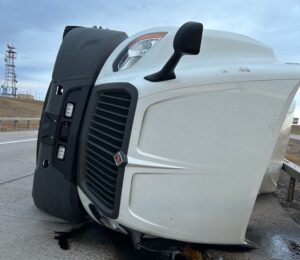AUGUSTA, Maine — Under the Maine Department of Transportation’s (MaineDOT) three-year work plan for 2021-2023, released Jan. 25, nearly $1.4 billion is set aside for highway and bridge capital projects. The plan — which includes all capital projects and programs, maintenance and operations activities, planning initiatives, and administrative functions — contains 2,180 individual work items with a total value of $2.71 billion.
According to a prepared statement from MaineDOT, the plan “maintains essential services and provides for solid capital programs” through “robust and prudent state bonding made possible by historically low interest rates and by fully utilizing discretionary and extraordinary federal funding.” It also seeks to expand partnership programs, support existing and emerging businesses, refocus investment in our villages, and confront climate change, the statement continues.
The nearly $1.4 billion set aside for highway and bridge capital projects over the next three years is allocated for:
- 166 bridge projects (estimated cost: $504 million);
- 100 miles of highway construction and rehabilitation (estimated cost: $212 million);
- 222 highway safety and spot improvements (estimated cost: $122 million);
- 893 miles of preservation paving (estimated cost: $321 million); and
- 2,175 miles of light capital paving (estimated cost: $108 million).
The project with the highest price tag is constructing the Interstate 395/Route 9 connector in Brewer/Eddington with a cost of $90.8 million. Other projects in the plan include:
- Replacement of two bridges that carry Interstate 295 in Yarmouth and two that cross I-295 in Freeport (estimated cost of all four projects: $38.8 million); this project is partially funded by $18.9 million in federal grant money.
- Replacement of the Route 1 (Station 46) Bridge in Woolwich (estimated cost: $32.5 million); this project is partially funded by $25 million in federal grant money.
- Bridge replacements and intersection improvements in Old Town and Stillwater (estimated cost: $20 million); this project is partially funded by $10.7 million in federal grant money.
- A railroad siding and platform project to improve Downeaster service in Wells (estimated cost: $23 million); this project is partially funded by $16.2 in federal grant money.
- Continued work on the Acadia Gateway Center project in Trenton (estimated cost: $23 million); this project is partially funded by $12.8 million in federal grant money.
- Two Maine State Ferry Service vessel replacements (estimated cost: $19 million).
- Heavy rehabilitation work on U.S. Route 1 in Machias and East Machias (estimated cost: $6 million).
- Dredging Searsport harbor (estimated cost: $5.3 million).
- Improvements to the Eastern Trail in Scarborough (estimated cost: $4.8 million).
MaineDOT’s work plan is dependent on funding assumptions involving state Highway Fund revenue, state bonding and federal funds. If funding sources do not materialize, the items within the plan will be adjusted to reflect funding changes.
According to MaineDOT, the agency’s on-time delivery rate for its capital program was a record-breaking 94% in 2020. However, the state’s transportation needs continue to outpace available resources. The pre-pandemic estimate of MaineDOT’s unmet need was $232 million per year. That shortfall figure was calculated after assuming that state bonding of $100 million or more will continue annually. The economic effects of the coronavirus pandemic including drops in traffic volumes and, subsequently, Highway Fund revenue have exacerbated MaineDOT’s funding challenges.
“In the short term, we must focus on defeating the virus, restoring our economy, helping Maine people and businesses in need, and addressing budget shortfalls,” said Bruce Van Note, MaineDOT commissioner. “In the long term, we have great opportunities to make a real difference for the people of Maine after we resolve the chronic funding challenges in our transportation system. By investing in transportation, we can move Maine forward.”
The Trucker News Staff produces engaging content for not only TheTrucker.com, but also The Trucker Newspaper, which has been serving the trucking industry for more than 30 years. With a focus on drivers, the Trucker News Staff aims to provide relevant, objective content pertaining to the trucking segment of the transportation industry. The Trucker News Staff is based in Little Rock, Arkansas.














